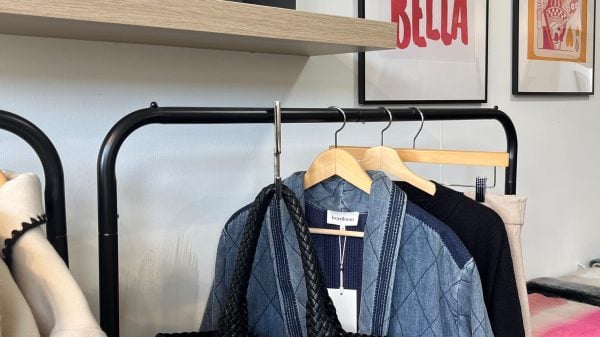In this week’s How-To feature, serial reseller/thrift and consignment expert Jolande Amoraal of Good Market breaks down what to do after your New Year’s closet clean out. Good news: It can make you a little extra cash on the side.

(All photos in this article are courtesy of Jolande Amoraal)
The 2020 holiday season was a peculiar time for all of us. With families sprawled across the country and friends isolating, Christmas was unusually quiet. And for how sad it was, the last few weeks of December also presented the perfect opportunity to deep-dive into your closet.
The New Year is a perfect time to do a closet clean out, as it allows you to start the year fresh and get rid of all the extra clothes that you never wear. Selling your personal items on apps like Poshmark has many upsides, including the fact that you can support sustainability while making money from home.
There’s a reflection process you do in business that goes like this: What can I stop doing? What can I start doing? What can I keep doing? This helps you weed out things that are taking up space and getting you nowhere, and accelerate good habits that add value to your life – and your wardrobe.

A big upside to purging the things you aren’t wearing or loving is making space for new joy and new things to love. Plus, you benefit from it financially. With COVID-19 hitting some people extra hard, this could be a good thing to try out for some extra cash.
First, take a look at what you are wearing the most and wearing the least.
There are two reasons why you wear certain clothing items the least: 1) You don’t have something to go with them or 2) You think they’re cute but you hate the way they fit you.
Sell that stuff and let someone else love it, or head to a reselling site to find something that will go with the item you don’t wear, so you’ll actually wear it.
 Second, repair anything with minor wear, such as loose buttons, pilling or a ripped seam before selling.
Second, repair anything with minor wear, such as loose buttons, pilling or a ripped seam before selling.
Refurbish until its good as new again. If there’s a major stain or discolouration on something, donate it to a local charity. There are people who lack mending skills, so repairing items before sale goes a long way to increasing desirability and resale value.
Third, look for items that are in high demand.
Keep your eyes open for BOLO items, meaning things you better be on the lookout for. The brown North Face puffer that Kendall Jenner wore sold out soon after she was seen prancing around in it! Being that its winter, puffers are generally selling fast.
Any of the newer Dr. Martens with chunky soles, straps or buckles will sell quickly. Levi’s ribcage jeans are super sought after, anything Lululemon sells really well, and so does anything Gym Shark and Alo Yoga. However, the biggest seller for many is vintage.
The attraction? Finding one-of-a-kind pieces that help you feel unique, and vintage does that for a lot of people.
Fourth, be sure to provide measurements.
Let’s say you’re buying a pair of vintage jeans. They’re high-rise and tapered with no stretch. Will they fit? Find a pair of your own jeans that you love in a similar style and compare the rise and waistband measurements (and the hip measurements, if you have those too).
If you’re within a half-inch margin, you’re usually a perfect fit. Providing measurements helps close sales. Also, ensure you’re being transparent about the quality of garments – people don’t mind a little wear and tear, as long as you’re upfront about it.
 Basically, you could have your dream wardrobe at 50 per cent off retail prices all the time. This is a great mentality for shopping, so rather than thinking, “this costs too much money” or “sustainable brands tend to cost more“, think about resale value and what you’ll end up paying in the end.
Basically, you could have your dream wardrobe at 50 per cent off retail prices all the time. This is a great mentality for shopping, so rather than thinking, “this costs too much money” or “sustainable brands tend to cost more“, think about resale value and what you’ll end up paying in the end.
Typically, quality clothes have a high resale value, so when you’re done with something, you can likely sell it for up to half of what you purchased it for. Keep this equation in mind: Buy for $250, wear for a year, sell for $120.









